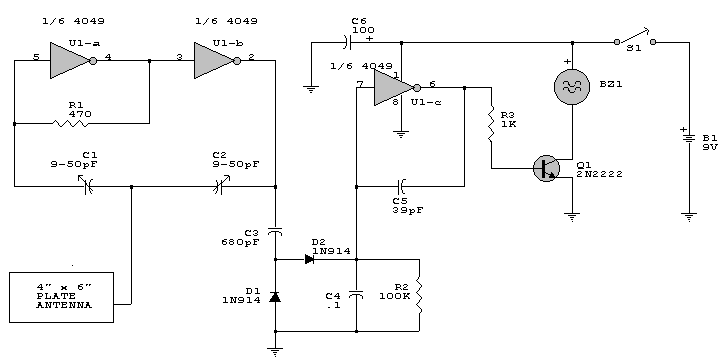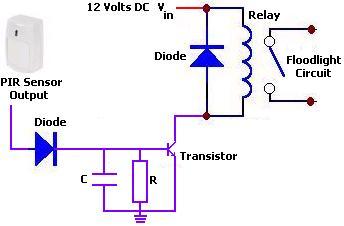
Alarm Circuit for Snoring Prevention by 555 Timer

The circuit was designed to create an alarm system that alerts a sleeping person to prevent snoring by utilizing a vibrator instead of an audio alert.
The circuit operates on the principle of detecting snoring sounds through a microphone or sound sensor. When the sound level exceeds a predetermined threshold, the circuit activates a vibrator mechanism. This approach is particularly beneficial in situations where the use of audio alerts may disturb other individuals nearby.
The design typically includes a microphone, an amplifier to enhance the sound signal, and a comparator circuit to compare the amplified signal with a reference voltage representing the snoring threshold. If the snoring is detected, the comparator output triggers a relay or a transistor that controls the power to the vibrator.
Power supply considerations are crucial for this circuit, often utilizing a battery for portability and ease of use. The vibrator can be a small motor or a piezoelectric actuator, which provides sufficient tactile feedback to wake the user without generating noise.
Additional features may include adjustable sensitivity settings for the microphone, allowing customization based on the user's snoring patterns, and a timer to limit the duration of the alert. Incorporating an LED indicator can provide a visual cue when the circuit is active, ensuring the user is aware of its operation.
In summary, this circuit serves as an innovative solution for managing snoring in a discreet manner, enhancing sleep quality for both the individual and those nearby.The circuit was designed to produce a circuit that will alarm a sleeping person to prevent snoring by using a vibrator instead of an audio alert so as not.. 🔗 External reference
The circuit operates on the principle of detecting snoring sounds through a microphone or sound sensor. When the sound level exceeds a predetermined threshold, the circuit activates a vibrator mechanism. This approach is particularly beneficial in situations where the use of audio alerts may disturb other individuals nearby.
The design typically includes a microphone, an amplifier to enhance the sound signal, and a comparator circuit to compare the amplified signal with a reference voltage representing the snoring threshold. If the snoring is detected, the comparator output triggers a relay or a transistor that controls the power to the vibrator.
Power supply considerations are crucial for this circuit, often utilizing a battery for portability and ease of use. The vibrator can be a small motor or a piezoelectric actuator, which provides sufficient tactile feedback to wake the user without generating noise.
Additional features may include adjustable sensitivity settings for the microphone, allowing customization based on the user's snoring patterns, and a timer to limit the duration of the alert. Incorporating an LED indicator can provide a visual cue when the circuit is active, ensuring the user is aware of its operation.
In summary, this circuit serves as an innovative solution for managing snoring in a discreet manner, enhancing sleep quality for both the individual and those nearby.The circuit was designed to produce a circuit that will alarm a sleeping person to prevent snoring by using a vibrator instead of an audio alert so as not.. 🔗 External reference





